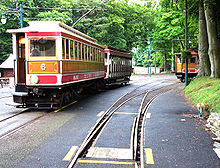Durability

Durability is the ability of a physical product to remain functional, without requiring excessive maintenance or repair, when faced with the challenges of normal operation over its design lifetime.[1]: 5 There are several measures of durability in use, including years of life, hours of use, and number of operational cycles.[2] In economics, goods with a long usable life are referred to as durable goods.
Requirements for product durability
Product durability is predicated by good repairability and regenerability in conjunction with maintenance.[3] Every durable product must be capable of adapting to technical, technological and design developments.[3] This must be accompanied by a willingness on the part of consumers to forgo having the "very latest" version of a product.
In the United Kingdom, durability as a characteristic relating to the quality of goods that can be demanded by consumers was not clearly established until an amendment of the Sale of Goods Act 1979 relating to the quality standards for supplied goods in 1994.[4]
Product life spans and sustainable consumption
The lifespan of household goods is a significant factor in sustainable consumption.[5] Longer product life spans can contribute to eco-efficiency and sufficiency, thus slowing consumption in order to progress towards a sustainable level of consumption.[6] Cooper (2005) proposed a model to demonstrate the crucial role of product lifespans to sustainable production and consumption.[6]
Types of durability
Durability can encompass several specific physical properties of designed products, including:
- Ageing (of polymers)
- Dust resistance
- Resistance to fatigue
- Fire resistance
- Radiation hardening
- Thermal resistance
- Rot-proofing
- Rustproofing
- Toughness
- Waterproofing
See also
- Availability
- Consumables
- Durable good
- Interchangeable parts
- Maintainability
- Product life
- Product stewardship
- Throwaway society
- Waste minimization
References
- ^ Cooper, Tim (1994). "Beyond Recycling: The longer life option" (PDF). The New Economics Foundation, Whitechapel Road, London: 5.
- ^ Stahel, Walter (2010). "Durability, Function and Performance". In Cooper, Tim (ed.). Longer Lasting Products: alternatives to the throwaway society. Farnham: Gower. ISBN 978-0-566-08808-7.
- ^ a b J. Lienig; H. Bruemmer (2017). "New Design Strategy – Product Durability". Fundamentals of Electronic Systems Design. Springer International Publishing. pp. 201–203. doi:10.1007/978-3-319-55840-0. ISBN 978-3-319-55839-4.
- ^ Ervine, Cowan (2010). "Durability and the Law". In Cooper, Tim (ed.). Longer Lasting Products: alternatives to the throwaway society. Farnham: Gower. pp. 187–188. ISBN 978-0-566-08808-7.
- ^ Cooper, Tim (1994). "The durability of consumer durables" (PDF). Business Strategy and the Environment. 3 (1): 23–30. doi:10.1002/bse.3280030103.
- ^ a b Cooper, Tim (2005). "Slower Consumption Reflections on Product Life Spans and the "Throwaway Society"" (PDF). Journal of Industrial Ecology. 9 (1–2): 51–67. Bibcode:2005JInEc...9...51C. doi:10.1162/1088198054084671.
